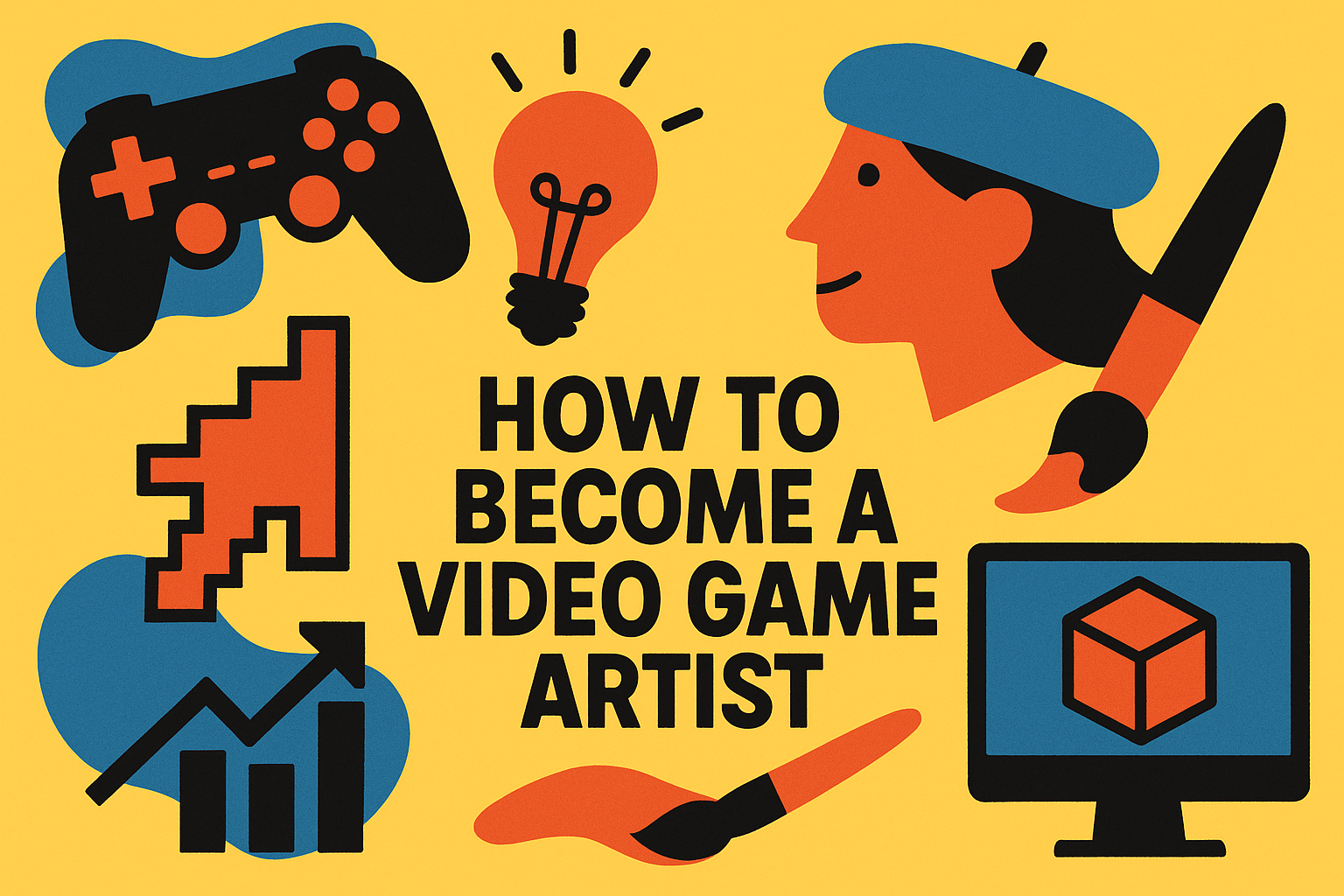Wondering how to become a video game artist but unsure where to start? Video game artists often create both 2D and 3D art, like characters, objects, environments, and props. This step-by-step guide gives you 8 clear actions—like using design software such as Maya or Unity—to build your skills and turn your creativity into a career.
Your path to creating amazing video games starts here.
Key Takeaways
Game artists use software like Maya, Blender, and Unity to craft 2D and 3D art—characters, props, objects, and entire game worlds.
A strong portfolio matters, so include original art and fan art too—studios love seeing your creative steps, sketches, and rough drafts, not just polished results.
Get hands-on skills from indie teams, modding groups, or game jams—over 35% of game artists are freelancers, not full-time staff.
Meet people in the industry through events like PAX or GDC, or connect online via LinkedIn and social media—many jobs come through these casual introductions.
Keep up-to-date with software and trends—by 2025, knowing AR and VR will boost your value, with entry-level artists making around $69,000 and senior artists earning up to $124,000.
Table of Contents
Understand the Role of a Video Game Artist
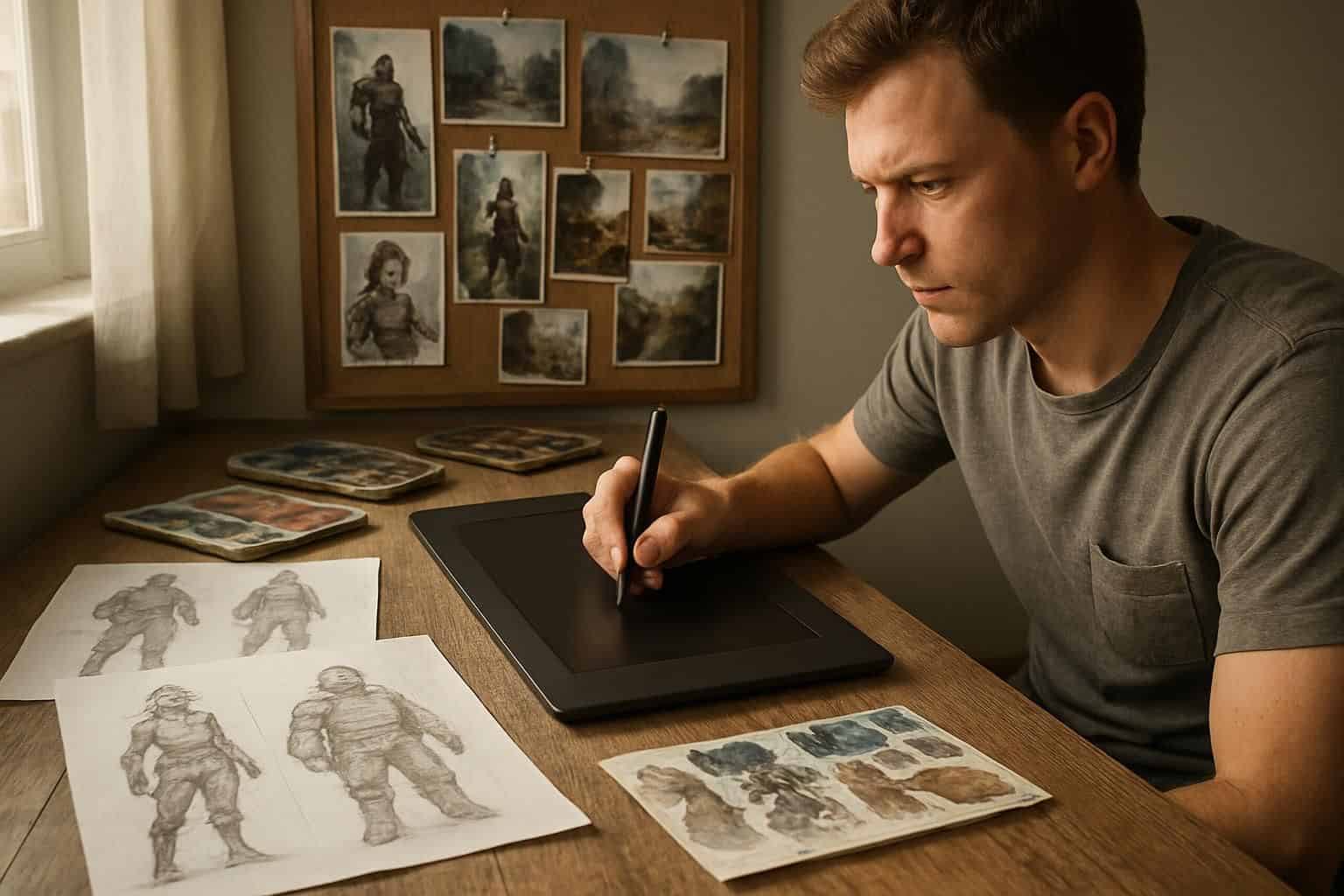
Video game artists bring games to life through art and design. They create characters, worlds, and visual elements that make games fun to play.
Job Description
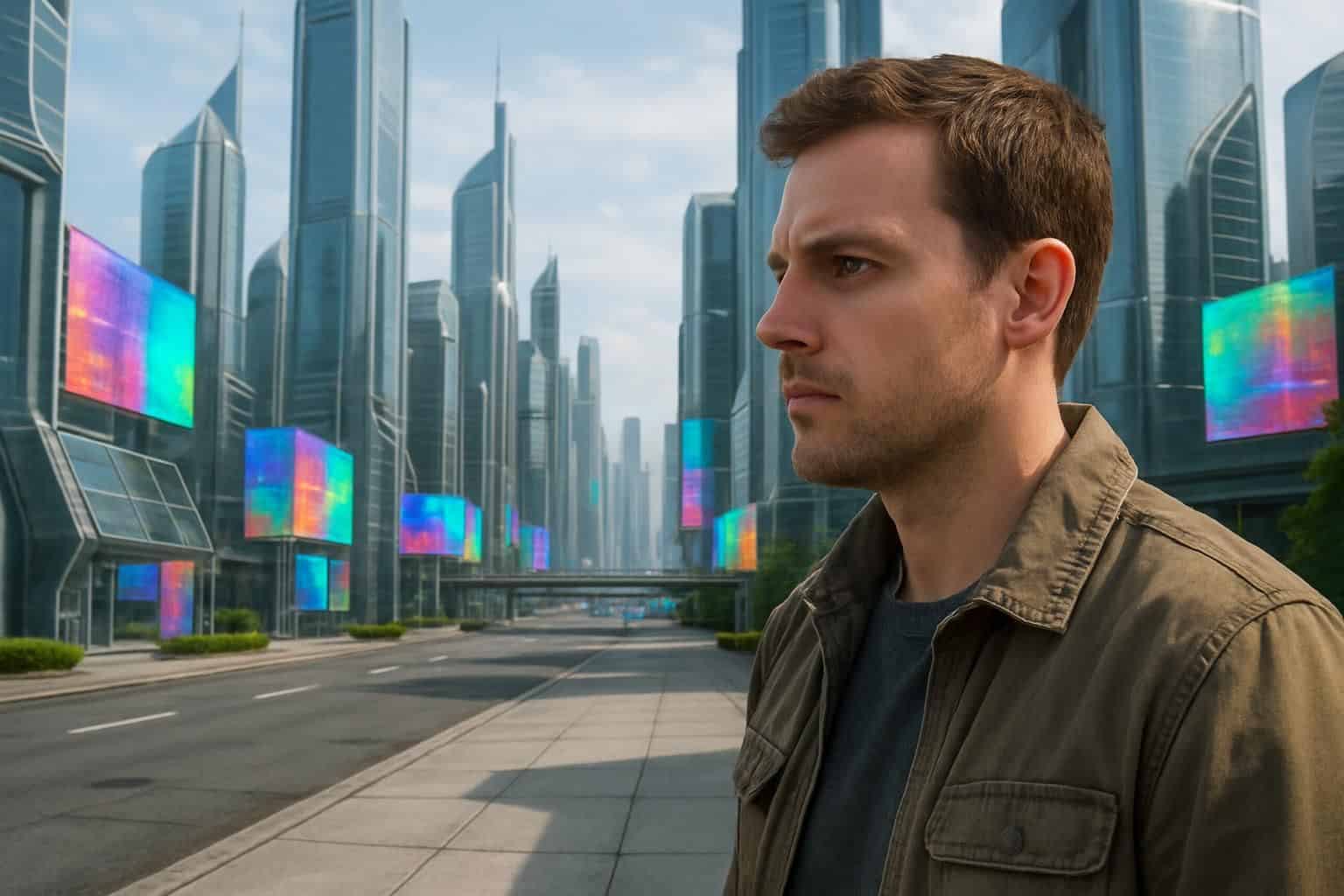
Game artists craft the visuals that make games feel alive. They create characters, objects, textures, props, and settings based on specific briefs. This includes both 2D sketches and 3D models, turning ideas into interactive visuals.
I worked for a studio where artists balance their creativity with technical limits and work closely with developers and designers. My first role as a game artist involved slot game art services for online casinos, including Telegram gambling casinos—there, I learned to follow strict brand rules.
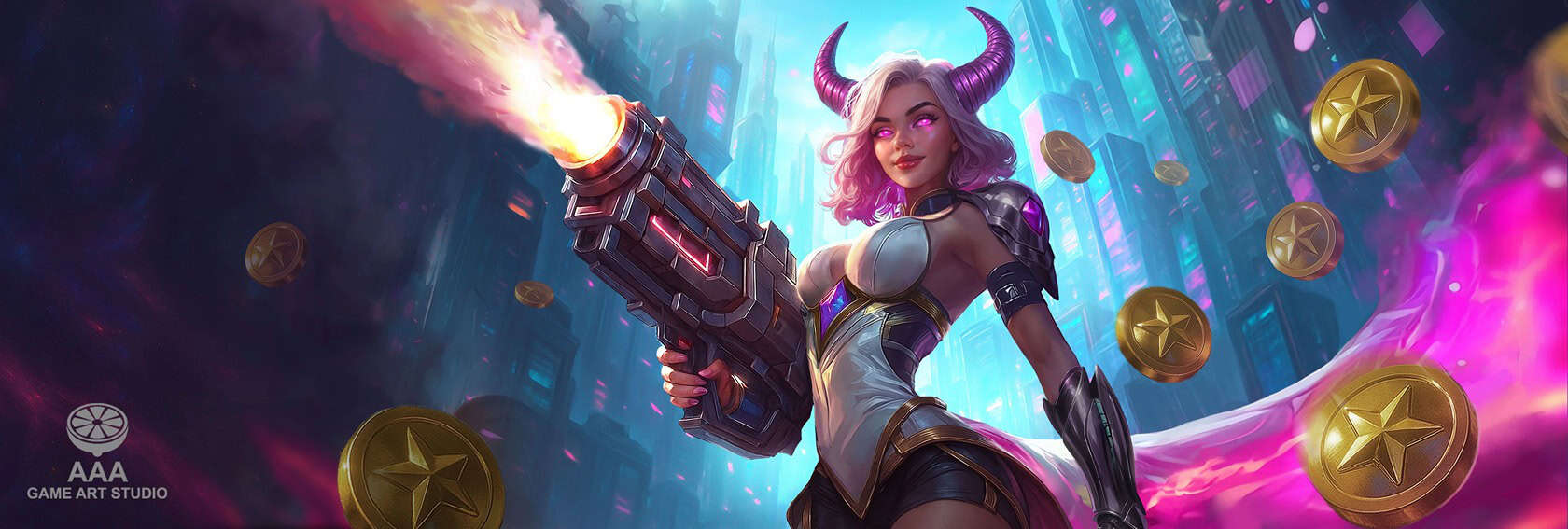
Typical game artist tasks include sketching ideas, modeling game assets, texturing surfaces, and animating game characters. Artists keep careful notes of their progress, and manage organized asset libraries for the team.
Great game art doesn’t just look good – it tells a story and guides players through the experience without them even realizing it.
Knowledge of industry-standard tools is a must—like Photoshop, ZBrush, Blender—and experience with Unity or Unreal game engines matters too. Game artists must stay aware of current trends and tech advances.
The job requires both creative skill and technical know-how to build digital worlds players want to explore.
Key Responsibilities
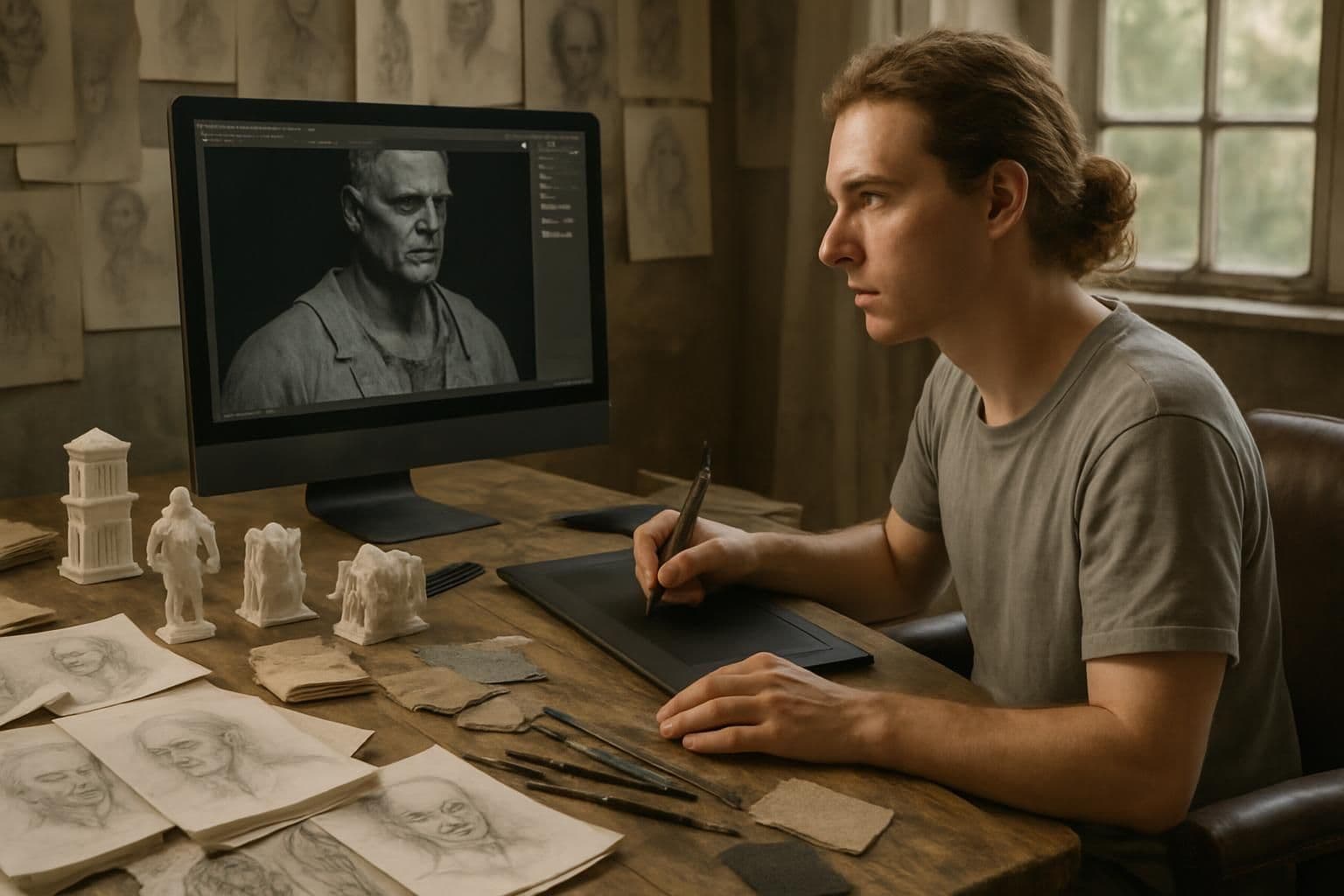
Video game artists handle all the visuals that make a game exciting. Each day, they’re sketching fresh ideas and crafting 3D models inside engine limits. They add textures, lighting, and shading, bringing realistic scenes to life.
Animating characters and creating eye-catching special effects are big parts of the job too.
Artists also sometimes put together promotional artwork and work on motion capture setups—making movements look natural. For this role, a mix of artistic talent and tech know-how is key.
A regular day could start with sketching characters and move on to resolving texture issues later. Artists stick closely to the set art direction, but still inject their own creativity.
Often, they’ll team up with programmers to ensure artwork runs smoothly within technical limits. Deadlines matter in game projects, keeping artwork on schedule with development timelines.
Top artists always strike the right balance between stunning visuals and solid game performance.
Gain Relevant Education

The right education opens doors to game art careers. You can choose between college degrees or learn through online platforms like Unity courses.
Art Degrees and Certifications
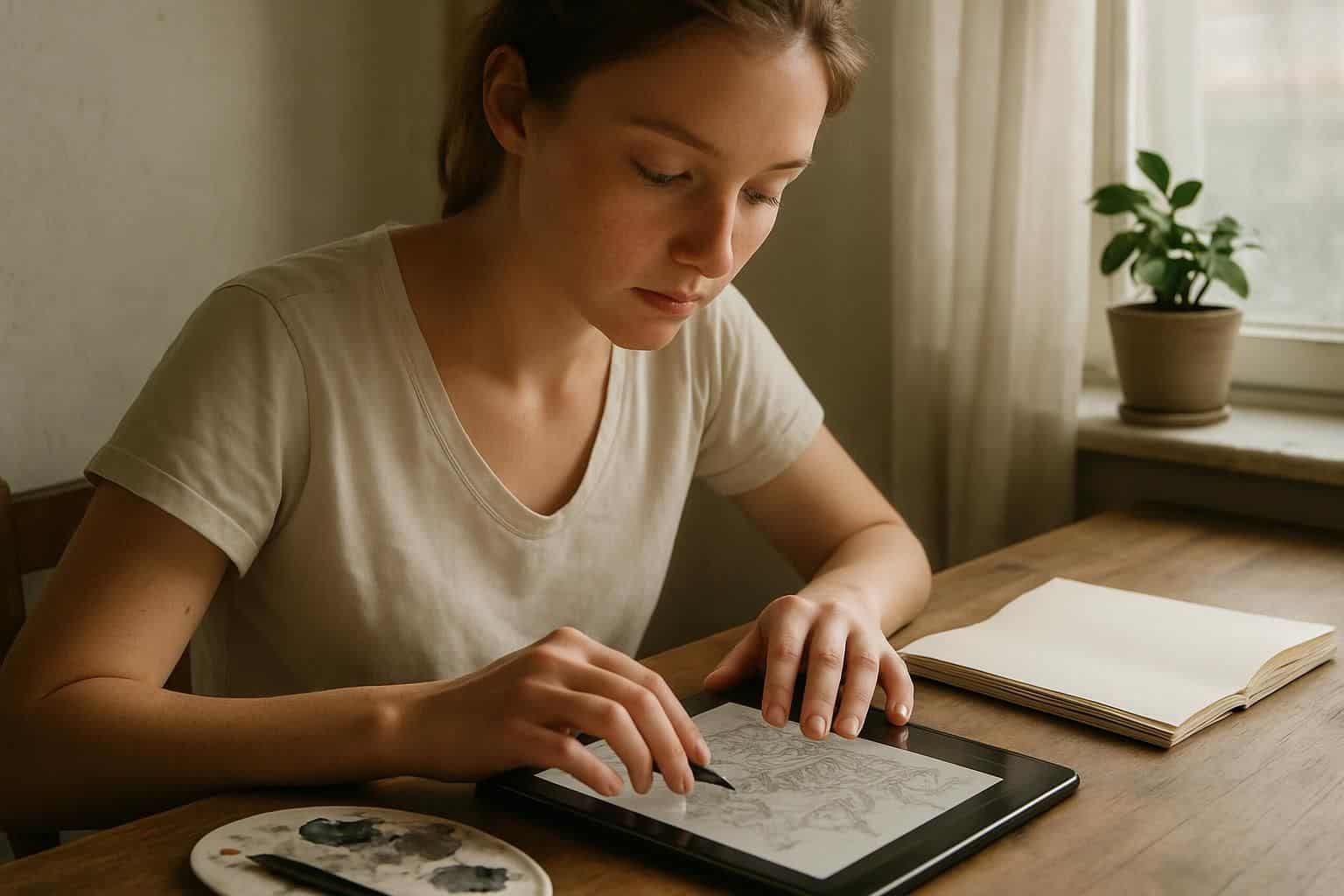
A bachelor’s degree in fine arts, computer graphics, or animation gives you a firm start as a video game artist. It takes about 4 years, covers digital art, design basics, and important software.
Most game studios prefer candidates with formal training.
For a quicker route, try a specialized certification like the Unity Certified Associate Artist. These targeted courses train you in specific tools—and you can finish them in just a few months.
Online bootcamps and short courses are great too, giving hands-on practice in things like concept art, character work, and 3D modeling, without needing years of study.
Education is the foundation, but your portfolio is what opens doors in the gaming industry.
Online Courses and Self-Directed Learning

Online classes let you learn game art skills without expensive formal schooling. Blender and Autodesk Maya offer free trials—perfect to try 3D modeling from home. Many digital art websites have easy video tutorials, with no previous experience needed.
Learn at your own speed on sites covering character design, digital sculpting, or animation.
Self-learning is perfect for geeks who like discovering things alone. Become part of online artist groups, share your projects, and get helpful feedback. Tune into webinars to stay updated on the latest graphic design trends and virtual worlds.
These tools help you build skills that game companies want. Curious about technical stuff? You can also become a game developer using similar methods.
Develop Essential Skills
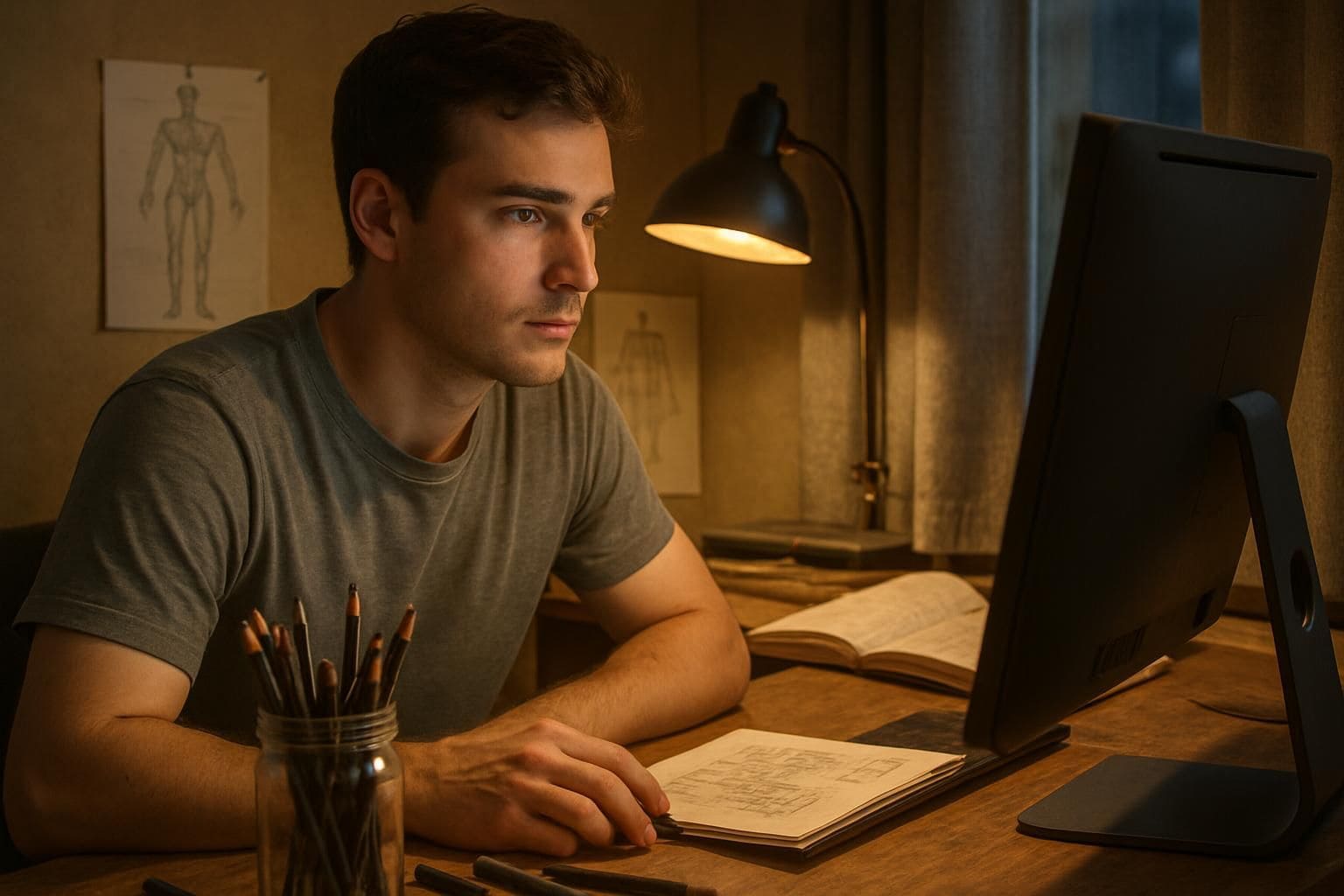
Your art skills make or break your game career. You’ll need to master both 2D and 3D tools to stand out in this field.
Digital Illustration and 3D Modeling
Digital illustration and 3D modeling form the core of video game art. Artists rely on software like Blender, Maya, or 3ds Max to craft amazing assets. With these tools, you build vibrant characters, landscapes, and objects—bringing games alive on-screen.
Knowledge of color and composition helps create models that hold players’ attention.
Great game art balances technical skill with creative vision—it’s more than attractive visuals, it’s crafting worlds players can believe in.
Technical problem-solving helps artists optimize 3D models to perform well in games. Good assets look great but don’t slow gameplay. Animation skills—like keyframing and rigging—ensure characters move smoothly and naturally.
Successful artists often combine art skills with teamwork, working closely with others on big game projects.
Knowledge of Design Software
Game artists rely heavily on key design tools to create rich virtual worlds. Popular software—like Maya, 3ds Max, and ZBrush—forms the core of any 3D modeling skill set. Adobe Photoshop and similar creative software help artists craft sharp textures and detailed concept art.
Mastering these tools isn’t just helpful, it’s essential for turning great ideas into memorable characters and stories.
Sure, mastering new software takes effort—but the job prospects make it worth your while. VR and AR projects now ask for artists who learn fast and shift smoothly to new platforms.
Strong skills in Unity or Unreal Engine can open doors at big-name studios. Next up—we’ll talk about putting together a portfolio that truly highlights these skills.
Build a Strong Portfolio
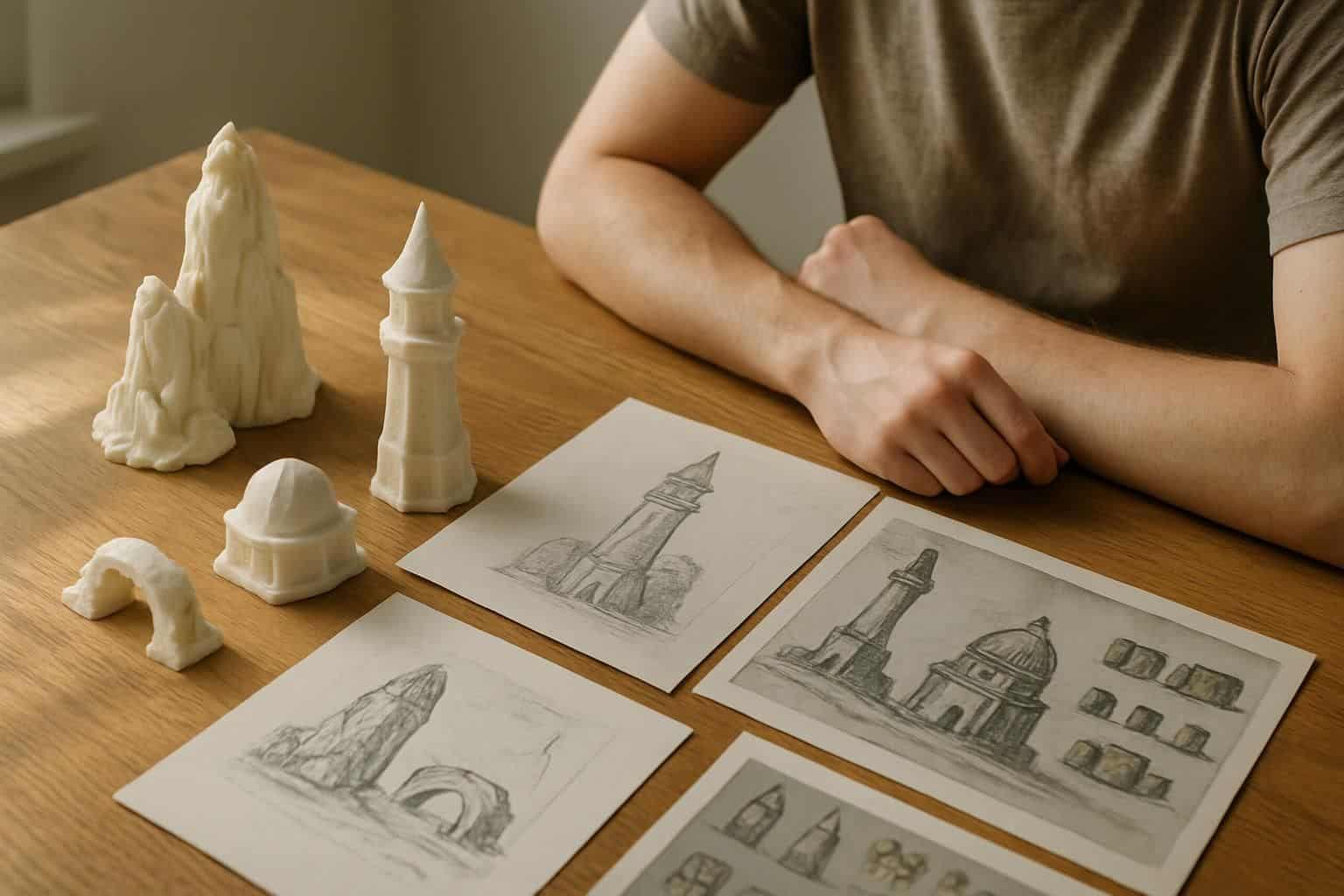
Your portfolio shows what you can do as a game artist. Make it shine with your best work that shows off your skills in 3D models, concept art, and game assets.
Create Original Projects
Original projects help you stand out in the competitive game art industry. Start by creating your own game characters, assets, or scenes from scratch. Doing this shows studios your individual style, and highlights your creative thinking.
Share sketches and progress images regularly on sites like ArtStation. Studios like seeing your thought process, not simply finished artwork.
Your portfolio isn’t just what you create, it’s the story of how you create it.
Projects that showcase 3D modeling and texturing clearly display your skills. Pick ideas that excite you personally—like fantasy heroes or futuristic landscapes—and update your portfolio frequently.
Small, original projects helped many indie game creators get noticed early on. Personal, creative pieces often draw more interest than typical classroom assignments or tutorial-based art.
Top game artists combine solid technical ability with fresh, unique concepts no one tried before.
Include Fan Art and Concept Designs
Fan art is great for showcasing skills game studios value. Creating artwork inspired by popular games lets you practice—and helps studios spot your talent. Top artists often began by sketching characters from games they enjoyed.
Showing fan designs proves you get what makes game art successful.
Make sure your portfolio blends 2D and 3D art—studios love flexibility. Employers appreciate artists who can shift easily between styles. Include concept designs too, since they highlight your creativity and problem-solving skills.
The strongest portfolios mix original pieces with fan art, highlighting your visual skills and digital know-how. Studios like seeing you understand why certain game art grabs attention, and how you can make it even better.
Gain Practical Experience
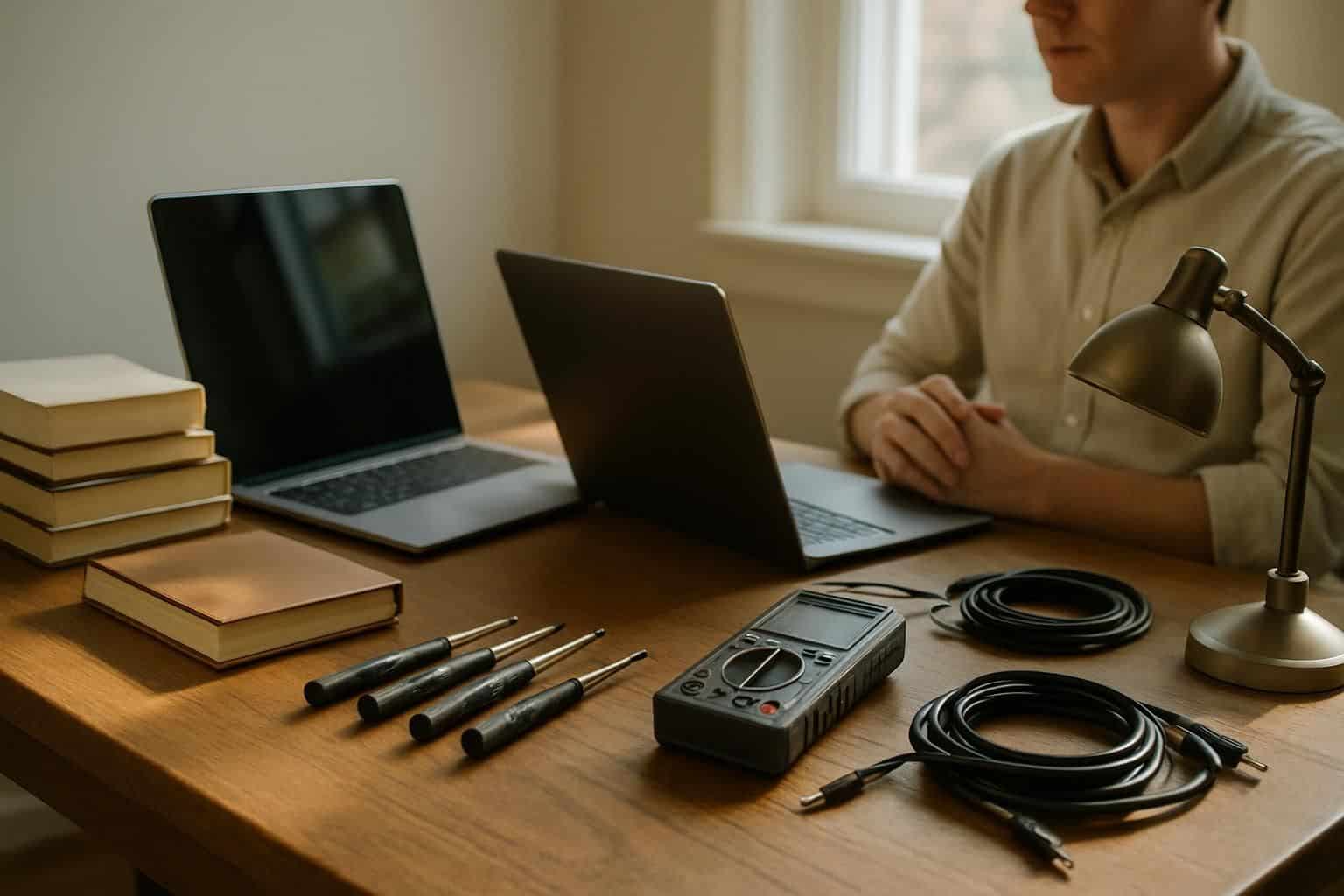
Real work builds skills no class can teach. Jump into indie projects or modding to show studios what you can do.
Freelancing and Indie Game Projects
Freelancing gives you a direct way into video game art. Right now, over 35% of game artists work independently instead of being full-time employees. You can start small—join indie projects through platforms like Unity Connect or Artstation Jobs.
These small gigs let you build a solid portfolio with actual examples of your skill. In fact, many successful artists started with character models or creating game environments for indie teams.
Indie projects highlight your real-world skills way better than any class assignment. Game studios care most about your ability to hit deadlines and collaborate with developers. You can also join game jams like Ludum Dare or Global Game Jam.
These events challenge teams to create games quickly—in just 48 to 72 hours. You’ll connect with programmers and designers, and learn how game art actually gets used. Plus, the connections made in these short events often lead to paid opportunities later.
Participating in Modding Communities
Modding communities can jumpstart your game art career. These groups let you tweak games—adding new assets or changing features. You’ll gain practical skills in asset creation and get exposure to the entire development cycle.
Plenty of skilled game artists got their start modding hits like Skyrim and Minecraft. This experience gives you solid portfolio samples, proving your abilities.
By joining modding groups, you connect with other creative people. You’ll meet programmers, designers, and artists who are into the same things you are. These contacts often lead to job suggestions and new collaborative projects.
Regular feedback from the group sharpens both your digital art skills and your 3D modeling. Even big studios, like Epic Games, regularly scout modding communities for new hires.
Network Within the Industry

The game dev world runs on connections – you need to meet people who can open doors for you. Join Discord servers, Reddit groups, and Twitter chats where artists share work and job leads.
Attend Industry Events and Workshops
Gaming events are great ways to connect directly with industry pros. Conferences like PAX, GDC, and E3 bring artists, developers, and studio leaders together. Be sure to carry business cards—and keep a tablet handy—to easily showcase your best art samples.
Many events even offer portfolio sessions, letting seasoned artists give you quick, useful feedback. Online forums, like ArtStation and Polycount, are also good spots to link up with other creatives.
Workshops offer skills, tips, and a chance to see what’s new in game art. You’ll pick up techniques straight from industry professionals and make friends with fellow artists. Game jams let you quickly build a functioning game, showing off how well you handle tight deadlines.
Team projects like these clearly demonstrate your ability to complete a game development workflow from concept through delivery. Staying active in online groups helps you notice job postings before they reach the general public.
Connect with Professionals Online
In-person events are great for face-to-face talks—but online platforms widen your network dramatically. LinkedIn helps game artists land jobs by connecting them with industry pros.
Many studios post job listings right onto LinkedIn, so it’s ideal for showcasing your art portfolio and skill set.
X (formerly Twitter) offers a casual vibe for connecting with concept artists and animators. Follow key studios, like Unity Technologies, to stay current on industry updates. Creating a strong personal brand on social media makes you more visible to hiring managers.
Joining digital art groups lets you share your drawings, gain useful feedback, and build friendships. Plus, these artist friends might point you toward job openings you wouldn’t find otherwise.
Stay Updated on Industry Trends
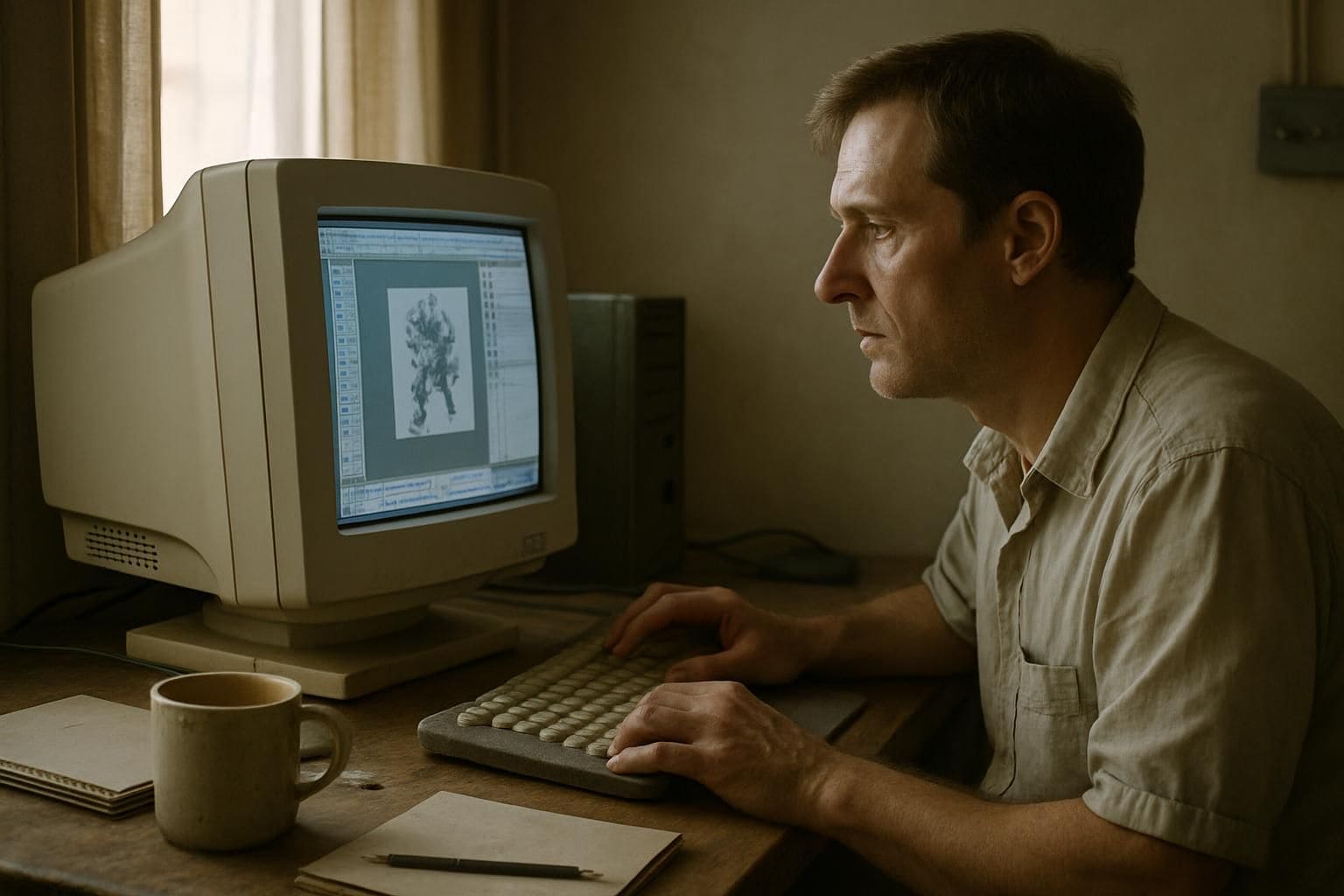
The game art world changes fast, with new tools and styles popping up each year. You must keep an eye on what’s hot in digital art software like ZBrush and Blender to stay competitive in the job market.
Emerging Tools and Techniques
Today, game artists rely on real-time engines like Unreal Engine 5 and Unity to craft amazing visuals—without waiting hours for renders. With these tools, artists can instantly view their changes, which boosts speed and sparks creativity.
Plus, virtual reality apps like Medium and Quill make sculpting 3D models feel as natural as molding clay—no physical limits.
AI tools have also transformed texture creation and animation. Programs like Substance Designer produce detailed textures in minutes, saving days of work. Even motion capture tech is now cheaper and easier to move around.
Small studios use it to easily record lifelike character movements. Artists need to keep up and master these technologies, since studios expect them to know the newest software—including VR and AR apps.
Popular Design Styles
Game art is changing fast in 2023. Real-time ray tracing now delivers lifelike lighting effects—making game visuals pop with realism. Artists even capture real objects through photogrammetry, transforming everyday items directly into digital game assets.
Plus, there’s a new wave of stylized art, inspired by classic cartoons and traditional artwork. It’s all part of stepping away from purely realistic graphics, toward expressive visual styles with unique charm.
Cross-platform design matters more than ever, as games must run smoothly on phones, consoles, and computers. Mobile art needs to look great—but also load fast and function well on limited hardware and smaller screens.
Many studios now emphasize diverse characters, including different body sizes, skin colors, and cultural backgrounds. This helps players see themselves in games—and builds a deeper personal connection.
How Will the Role of a Video Game Artist Evolve in 2025?
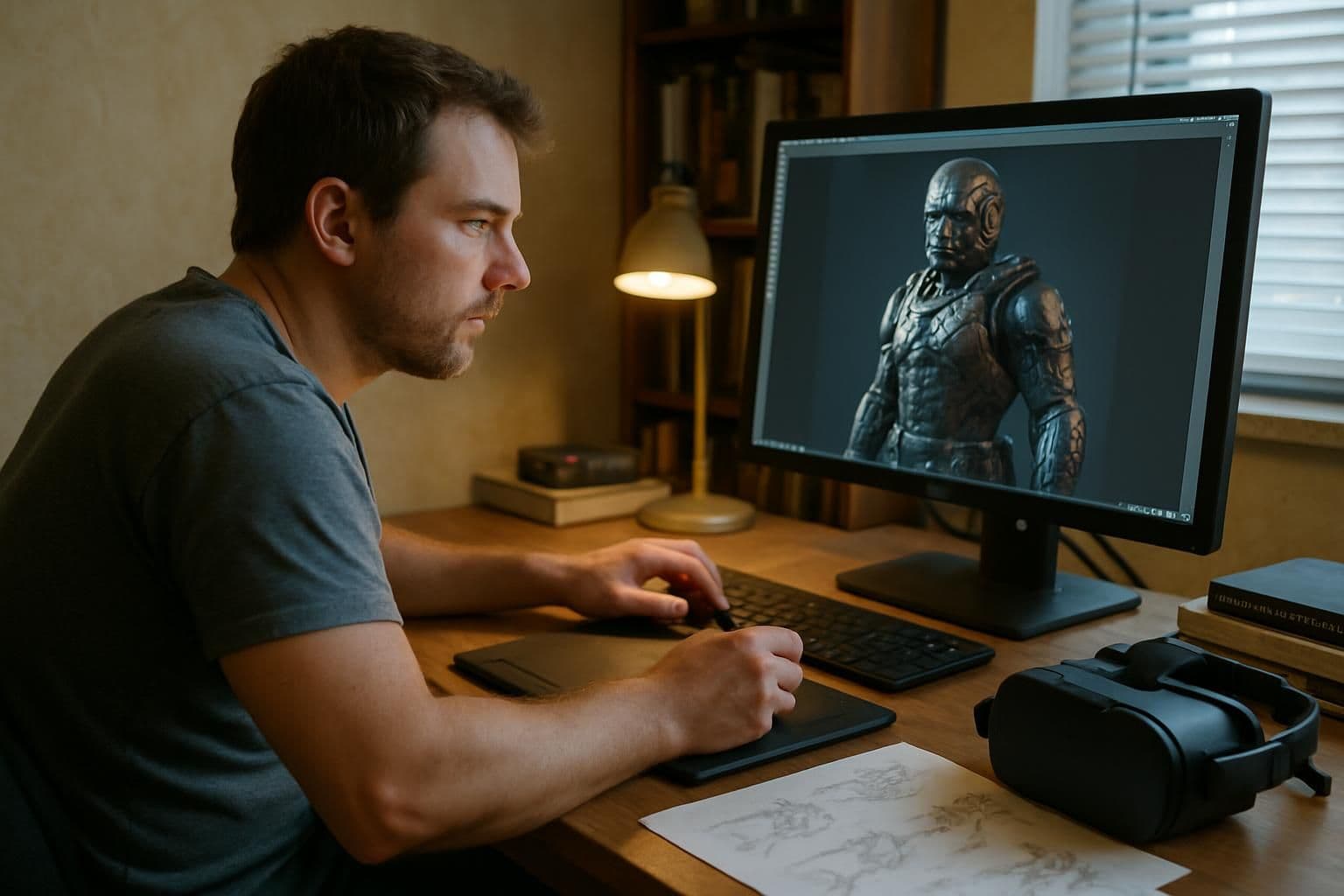
By 2025, video game artists will need solid skills in both 2D and 3D art to stay competitive. They’ll work directly with lead designers, crafting visuals that closely match the game’s core ideas.
Pay will rise steadily—junior artists can expect around $69,000, while seniors might earn up to $124,000. The role itself will shift quickly, especially as VR and AR become standard tech in games.
Artists skilled in various areas—characters, props, environments—will land the best jobs.
Artists will benefit from learning new software and skills through online classes and workshops. Building good connections will help them secure positions at larger studios or find freelance gigs.
Adapting easily between art for mobile apps, funding for game development projects, and PC games will create the most opportunities for career growth.
Making visual effects that stand out, along with fresh character designs, will also become important.
People Also Ask
What education do I need to become a video game artist?
A degree or certification in computer science, visual arts, or game design is helpful. Game studios appreciate candidates with formal training. Extra courses in animation software, like Flash or Illustrator, can boost your resume too.
Is a professional portfolio important for video game artists?
Absolutely! A solid portfolio highlights your animation, user interface, and virtual scene design skills. It quickly shows employers what you can do.
How can I improve my communication skills for this career?
Practice clearly sharing ideas during team meetings. Get comfortable explaining your visual choices. Clear communication makes games more enjoyable and user-friendly.
Do I need programming knowledge?
Knowing basic coding can help you understand how games come together. It’s not always a must, but learning languages like ActionScript gives you an advantage.
What’s the best way to gain experience?
Try internships at gaming companies. Reach out to industry experts and mentors. Creating narratives, sound effects, and virtual scenes in real projects speeds up your learning.
How important is understanding user experience?
It’s key. Designing around user needs means more immersive and enjoyable games. Watch how players interact with games on popular platforms, such as Android, to keep your designs friendly and engaging.
References
https://www.cgspectrum.com/career-pathways/game-artist
https://himalayas.app/career-guides/game-artist (2025-05-25)
https://www.tealhq.com/how-to-become/game-artist
https://www.ed2go.com/ctkce/online-courses/game-development-introduction-self-paced/
https://files.eric.ed.gov/fulltext/EJ1415454.pdf
https://www.upskillist.com/blog/top-10-skills-for-3d-modeling-careers/
https://www.petersons.com/blog/10-skills-you-need-to-become-a-video-game-designer/
https://usv.edu/blog/tips-for-building-a-professional-portfolio-as-a-video-game-artist/ (2023-04-12)
https://www.rmcad.edu/blog/freelancing-in-game-art-building-a-successful-independent-career/ (2025-03-11)
https://www.tealhq.com/how-to-become/video-game-artist
https://hitmarker.net/networking-in-video-games-and-esports
https://artbizsuccess.com/being-seen/
https://harveynewman.com/breaking-into-the-games-industry/
https://blog.vertexschool.com/game-art-industry-trends-to-watch/ (2024-08-15)
https://www.indeed.com/career-advice/finding-a-job/how-to-become-video-game-concept-artist (2025-03-26)
